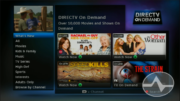This is the Perfect Vision PVS22K satellite finder. At just under $14 it seems like a great deal. If you are hooking up older, round satellite dish it just might help you get things moving a little faster. However, the PVS22K isn’t designed for newer satellite dishes. It’s not the right choice if you’re using DIRECTV SWM Technology, because it simply can’t read the SWM signal.
For any modern dish, you’ll need something like the Birdog USB Plus or AIM. Of course, those meters are a lot more than $14. We know that, and we’re on the lookout for something a little more economical, However, both those meters are an excellent choice, as we found out when we pitted them head-to-head a few months ago.
Today’s satellite dishes do more than just receive signals from one satellite. A simple satellite finder is nothing more than a radio receiver that uses your dish as an antenna. It listens for a signal on the likely satellite frequencies. However, they don’t help you tune multiple satellites, which requires you to adjust your dish on three axes in order to make sure all the signals come in loud and clear.
SWM technology is used by DIRECTV to make simplify wiring, but it changes the way the satellite signal goes over the wire. Instead of using the regular frequencies, SWM-enabled dishes rely on a two-way communication between the dish and satellite receiver to place the signal your receiver needs on a frequency that both receiver and dish agree on. It makes most signal finders utterly useless. In order to work with SWM technology, a meter has to effectively imitate a satellite receiver and communicate with the dish. Obviously a simple radio receiver isn’t going to do that.
A simple satellite finder isn’t going to tell you which satellite you’re tuned to, either. You may be accidentally pointing at a satellite that has nothing to do with your home system, and only a real satellite meter is going to show that. Both the Birdog and AIM have a function that tunes in on a specific satellite and gives you the exact signal strength, and the AIM even gives you guidance along the way and does a final verification to make sure all your satellites are visible at the same time.
So, if you’re tailgating and bringing that round dish with you, the cheaper signal finder will get you on the way, but for a permanent installation you’ll need a bit more.





